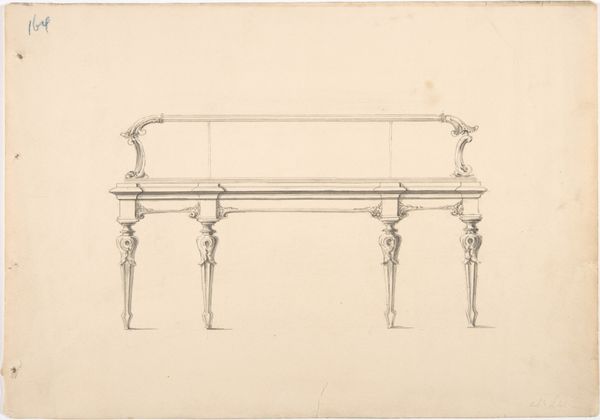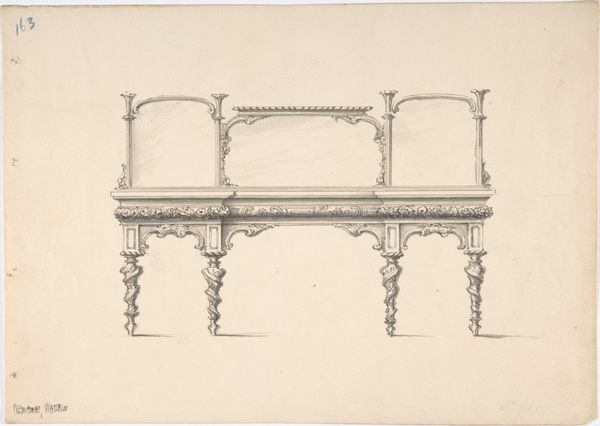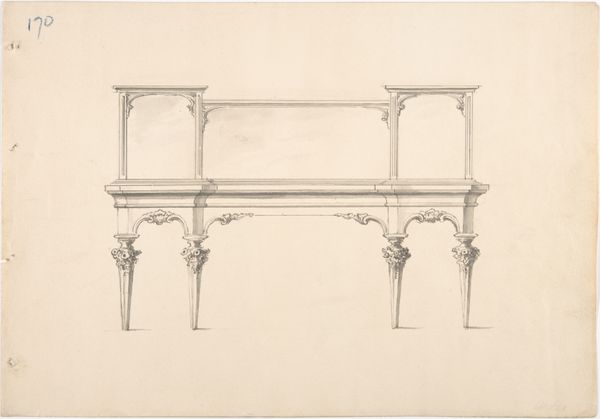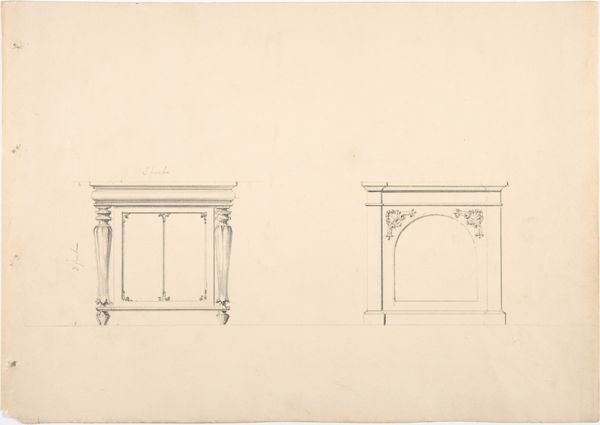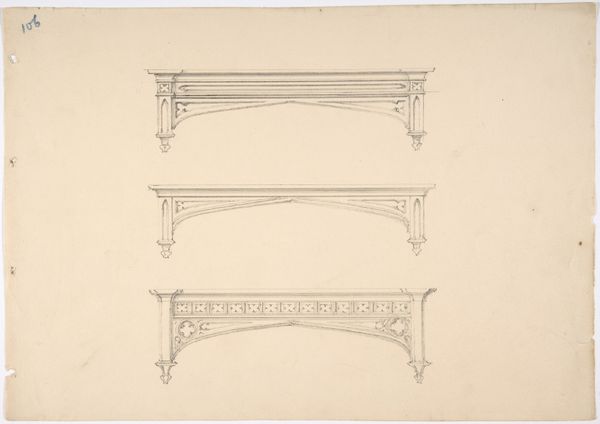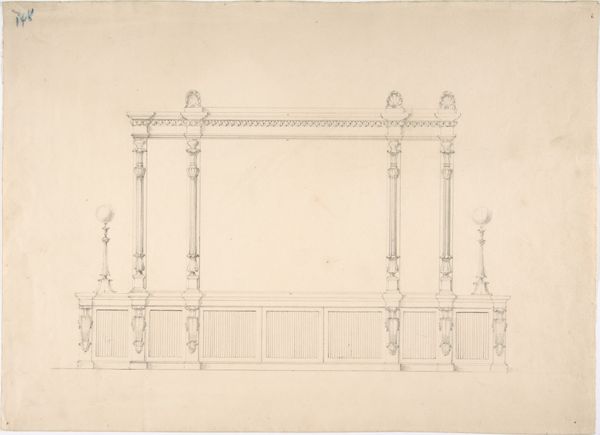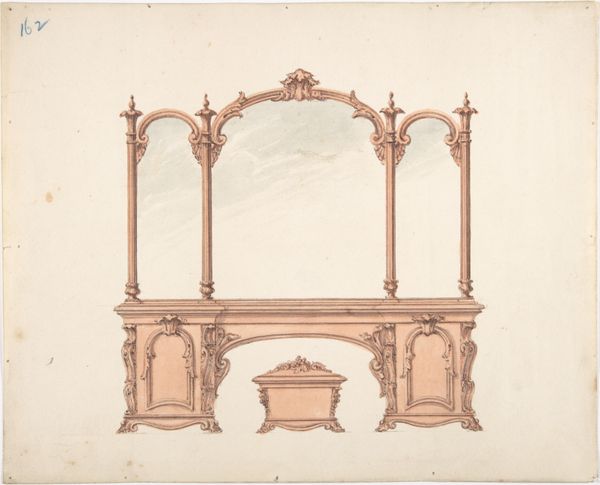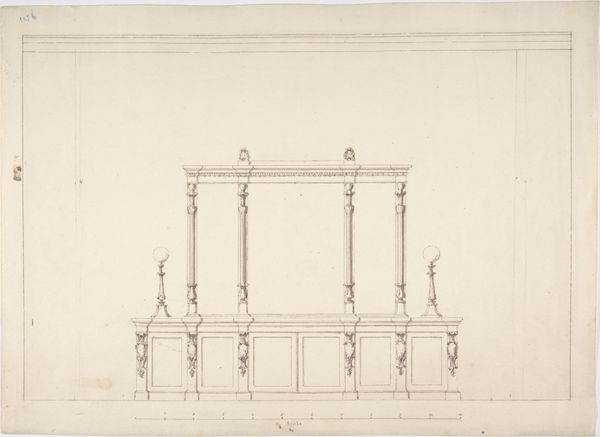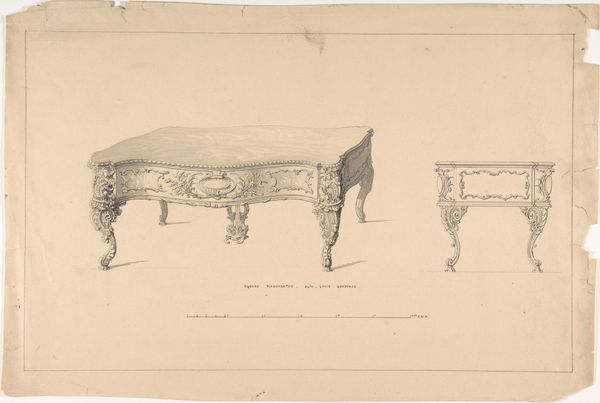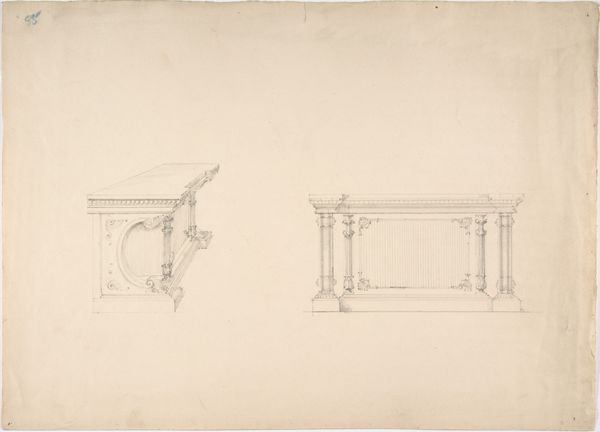
Design for a Sideboard with Mirrors and Shell Ornament, a Casket Below 1815 - 1840
0:00
0:00
drawing, print, pencil
#
drawing
#
neoclacissism
# print
#
furniture
#
etching
#
form
#
pencil
#
line
Dimensions: sheet: 8 11/16 x 12 3/16 in. (22 x 31 cm)
Copyright: Public Domain
Editor: This drawing, titled "Design for a Sideboard with Mirrors and Shell Ornament, a Casket Below," comes from the early 19th century, between 1815 and 1840. It's an anonymous work using pencil, etching, and print. I find it so precise and delicate! How would you interpret this work? Curator: Oh, this sideboard drawing whispers tales of grand houses and whispered secrets. See how the anonymous artist renders such intricate detail with just line and shadow? Imagine it gracing a dining room, reflecting candlelight in those mirrored arches! I'm curious; what about the casket catches your eye? Does it feel like a purely functional piece, or something more symbolic? Editor: I hadn’t thought of it symbolically... maybe it suggests holding precious memories or valued possessions. Is the shell ornamentation typical for the Neoclassical period? Curator: Exactly! The shell is pure Neoclassical delight—a nod to classical antiquity, a symbol of Venus rising from the sea. The symmetry, the balance—all of it screams good taste and ordered elegance. The artist's very careful consideration of proportion gives it a calm, almost spiritual air. Isn’t it amazing how a simple sketch can suggest a whole world of aristocratic life? What do you think about the contrast of delicacy and function? Editor: That's fascinating! It makes me see how even functional designs can be full of cultural meaning and artistic intention. It seemed like 'just a drawing,' but it speaks volumes. Curator: Precisely! It reminds us that beauty isn't confined to paintings on walls. Even everyday objects carry stories and echoes of the past. Never underestimate a quiet drawing; sometimes, it's louder than a shout! I have learned to perceive beyond functionality here, and more in aesthetics, design, and art historical context.
Comments
No comments
Be the first to comment and join the conversation on the ultimate creative platform.
